10 Environmental Benefits of Recycled Steel to Cheer For
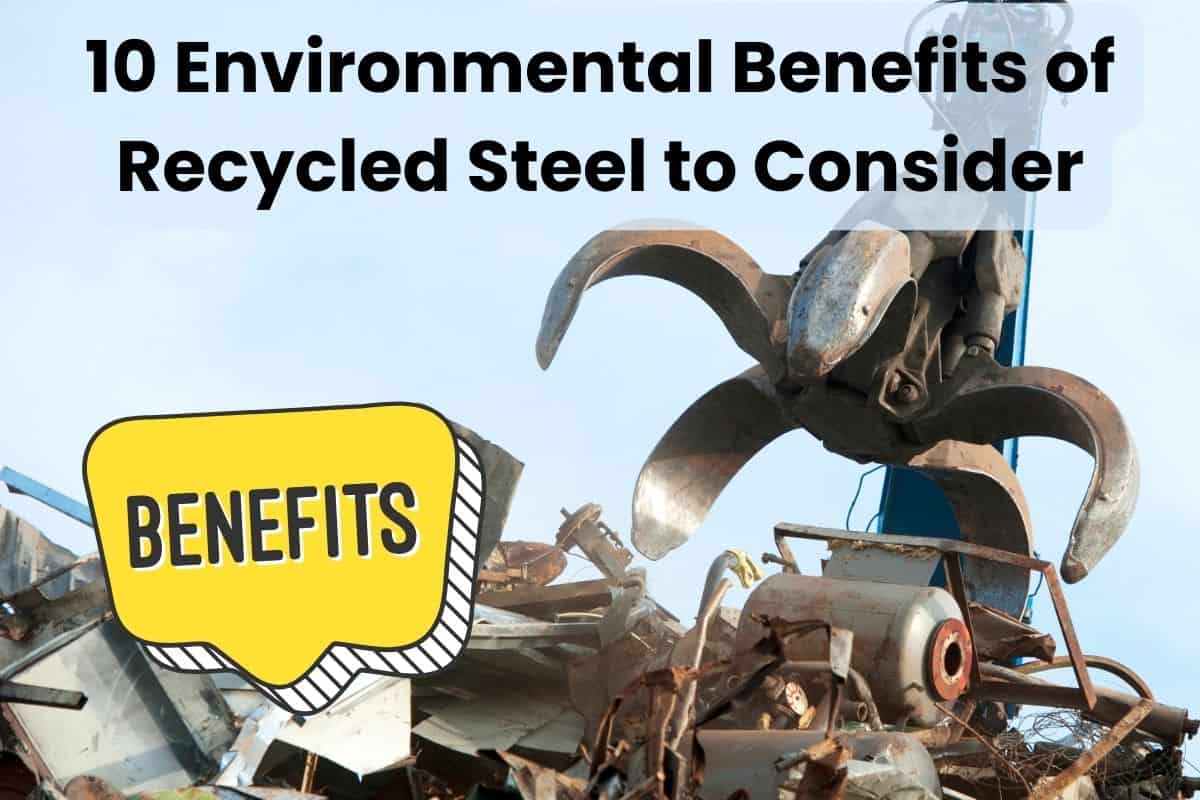
The construction industry contributes greenhouse gas emissions responsible for 50% of climate change, 50% of all landfill waste, and 23% of air pollution.
We can mitigate these effects by shifting to green building materials like recycled steel. The many environmental benefits of recycled steel make it an ideal choice for eco-conscious building.
Recycled steel mitigates the adverse environmental effects of manufacturing primary steel. Producing primary steel is an energy-intensive process that uses more natural resources like limestone, iron ore, and coal.
It also contributes in a big way to greenhouse gas emissions since producing a ton (2,000 lb) of virgin steel generates 1.4 tons (2,800 lb) of carbon dioxide.
In this article, I’ll discuss the ten environmental benefits of recycled steel to consider. From energy conservation to saving natural resources, recycled steel has much to offer. Keep reading!
1. Energy Savings Through Steel Recycling
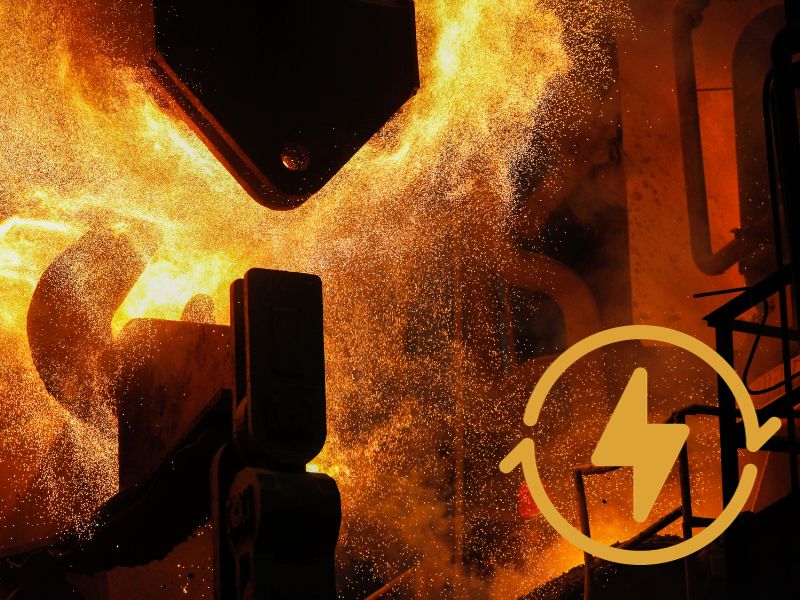
Energy conservation slows global warming by reducing greenhouse gas emissions. It also reduces the demand for natural resources like coal and oil.
Producing primary steel is an energy-intensive process. It consumes approximately 6.0 MJ of energy to make a ton (2,000 lb) of steel.
Such a high amount of energy consumption contributes to the generation of greenhouse gases, particularly because fossil fuels tend to be used to meet the energy demand.
However, recycled steel is a more eco-friendly material that conserves energy because the process involves the single step of remelting scrap steel, typically in an electric arc furnace.
On the other hand, if iron ore is used as the starting point, the iron must first be extracted from the iron ore in a blast furnace to produce pig iron, which is then used as feedstock for a basic oxygen furnace or electric arc furnace to make steel in a second process that consumes further large amounts of energy.
According to the U.S. Environmental Protection Agency (EPA), recycling steel conserves between 60 and 74 percent of the energy used to manufacture primary steel.
To emphasize the energy-saving benefits realized by recycling steel, the National Material Company states that the saved energy can power approximately 18 million U.S. homes annually.
Recycling steel conserves energy by eliminating the following energy-intensive processes:
- Pig iron production: It uses approximately 13.5 × 109 joules for every ton (2,000 lb).
- Basic oxygen furnace for liquid hot metal: It consumes roughly 11 × 109 joules for every ton (2,000 lb) of steel produced.
- Electric arc furnace for liquid hot metal: It requires about 2.25 × 109 joules per ton (2,000 lb) of steel produced.
- Hot rolling flat: It consumes roughly 2.2 × 109 joules per ton (2,000 lb) of steel produced.
- Cold rolling flat: It uses about 1.2 × 109 joules for each ton (2,000 lb) of virgin steel produced.
Melting is the only energy-intensive process in steel recycling, which requires temperatures of approximately 3,000°C (5,432°F).
2. Reduction in Greenhouse Gas Emissions
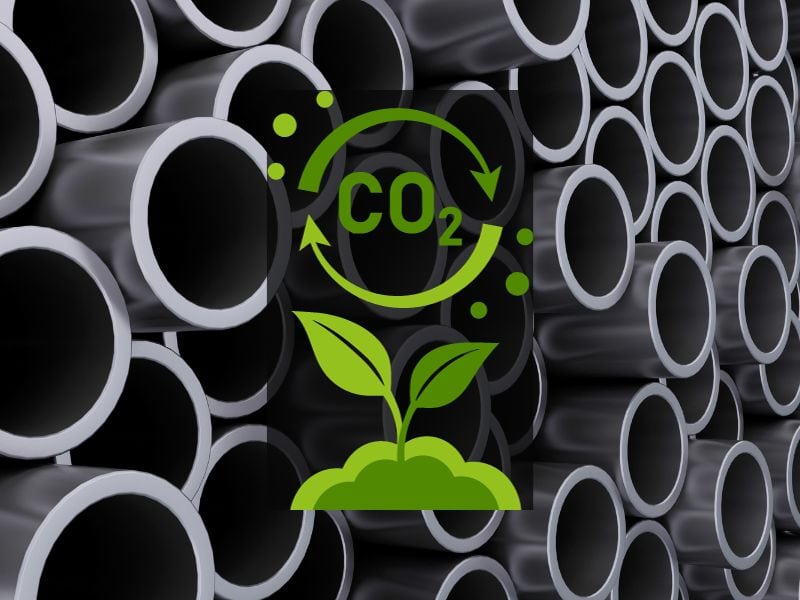
Greenhouse gases cause global warming and climate change through the greenhouse effect.
The greenhouse effect is a phenomenon whereby greenhouse gases in the atmosphere trap solar radiation from the earth’s surface, preventing it from escaping into space.
Trapping solar radiation in the atmosphere increases the planet’s temperature, causing global warming.
Generally, manufacturing primary steel emits 1.4 tons (2,800 lb) of carbon dioxide for every ton (2,000 lb) of steel produced.
On the flip side, recycling steel reduces carbon emissions by 58%, which is vital in mitigating global warming.
The primary sources of carbon dioxide in steel production include:
- Opencast mining and quarrying activities (e.g., diesel used to power excavators and trucks).
- Coke and coal combustion (CO2 is one of the products of combustion).
- Operating electric arc furnaces and basic oxygen furnaces (unless the electric arc furnace is powered by green electricity).
Besides carbon dioxide, other greenhouse gasses emitted by steel production include:
- Nitrous oxide: It’s emitted due to the incomplete combustion of fuel components like nitrogen and methane.
- Sulfur dioxide: It’s released by sinter plants that process iron ores into pellets.
Eliminating the above greenhouse gas emitting processes by recycling steel is vital in mitigating global warming and climate change.
3. Conservation of Natural Resources

Natural resource conservation is one of the major environmental benefits of recycled steel.
Manufacturing steel consumes a considerable amount of natural resources, as follows:
- Coke/coal: Approximately 770 kg (1,700 lb) of bituminous coal is used to produce a ton (2,000 lb) of steel. Coal is heated in the absence of oxygen and cooled to generate coke, a reducing agent that reacts with oxygen and iron ore to produce pure molten iron.
- Iron ore: It’s fed into a blast furnace to produce pig iron. Roughly 1.5 tons (3,000 lb) of iron core is used to manufacture a ton (2,000 lb) of pig iron.
- Limestone: It’s used as a fluxing agent to increase the fluidity of the slag produced in basic oxygen furnaces and electric arc furnaces to produce iron and steel.
- Alloying elements: These are elements like manganese, chromium, molybdenum, and tungsten. They’re added to the furnaces in small quantities to improve the chemical and mechanical properties of steel.
Unfortunately, the above resources are non-renewable, so conserving them as much as possible is essential.
Recycling steel is an excellent way to conserve the above finite natural resources. Recycling steel uses scrap metals with minimal input from raw materials.
In terms of numbers, recycling a ton (2,000 lb) of steel conserves about 1.4 tons (2,800 lb) of iron ore, 0.3 tons (600 lb) of limestone, and 0.8 tons (1,600 lb) of coal.
It also significantly reduces the need for alloying elements, conserving these scarce materials.
4. Waste Reduction and Landfill Diversion
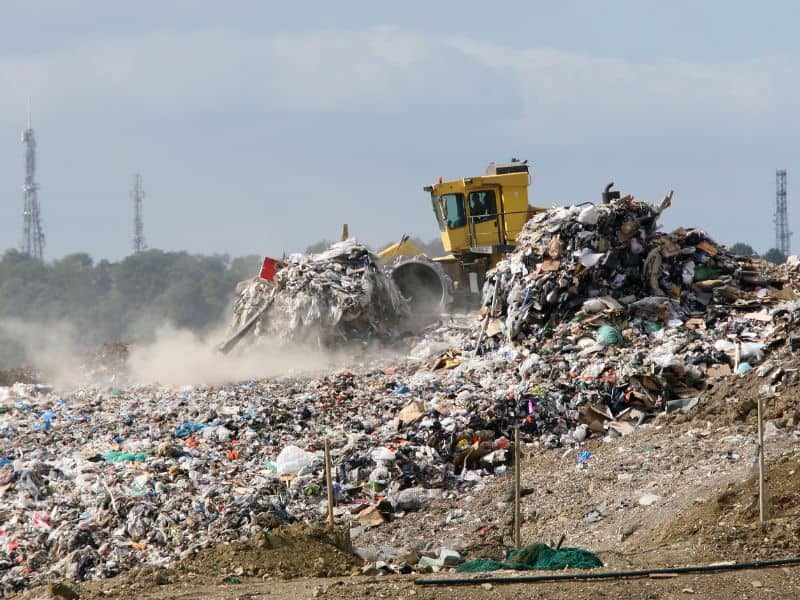
Construction and demolition (C&D) waste accounts for roughly 40 percent of the world’s annual solid waste.
The construction industry is responsible for over 600 million tons of waste annually. Such a huge amount of waste poses a threat to the environment due to sub-optimal waste disposal. Material wastage is the primary source of C&D waste.
According to Science Direct, 30 percent of construction and demolition waste goes to landfills.
Landfills pose a significant environmental threat by releasing vapor, methane, hydrogen, and nitrogen. These compounds cause smog and climate change if left uncontrolled.
Landfills also inevitably release leachate into the environment. Leachate is a mixture of liquids that drain from the landfill, typically comprising water from rainfall or other sources that percolates through the waste in the landfill, leaching out contaminants from the waste material in the landfill.
Leachate seeps out of the basal liner of the landfill (if an intact liner is even present) and passes into the sediments and rocks beneath, where it can enter groundwater, often causing pollution. Once in the groundwater, the contaminants can travel significant distances, making the surrounding groundwater unfit for potable (or other) use and even causing pollution in rivers and lakes.
Unfortunately, since steel is the main metal used in construction, it also accounts for the highest amount of metal in C&D waste.
That said, recycling steel is an efficient waste reduction and landfill diversion technique. Steel recycling reduces the amount of waste going to landfills by conserving metal products for reuse.
Besides, recycled steel eliminates the need for opencast mining to extract iron ore from the earth’s crust. Opencast mining generates between 9 and 10 times more waste debris than underground deep mining.
Every ton (2,000 lb) of recycled steel diverts approximately 1.28 tons (2,560 lb) of solid waste from ending up in landfills, thus protecting our environment from contamination through hazardous materials.
Diverting waste from landfills eliminates the need to create more landfills and eliminates costs and emissions associated with C&D waste transportation, disposal, and trucking fees.
5. Water Conservation in Steel Recycling

The average water consumption for steel production is 28.6 m3 per ton (2,000 lb).
Most of the water supplied to steelmaking industries is used in cooling operations, dust scrubbing, descaling, and other processes. Using such a high amount of water to produce steel poses a threat to water supplies, an already scarce resource.
Luckily, recycling steel reduces the need for the large amounts of water used in primary steel production processes.
Although most steelmaking companies employ water conservation techniques like recycling and reuse, recycling steel remains a far more effective water conservation technique.
Recycled steel uses less water than virgin steel, conserving large quantities of fresh water for domestic use and other industries, as well as the environment (fish need somewhere to swim, after all).
Moreover, it conserves a large amount of water that would otherwise be used in iron ore extraction, where it is used for minerals processing steps to recover the iron ore.
6. Air Pollution Reduction

Steel production produces a wide range of hazardous air pollutants that can cause severe health issues in humans and animals.
These pollutants include nitrogen oxides, particulate matter, sulfur dioxide, volatile organic compounds (VOCs), carbon monoxide, carbon dioxide, and ozone precursors.
Moreover, coke ovens generate air pollutants like naphthalene. Naphthalene is a highly toxic and carcinogenic air pollutant.
The steel production process also emits fugitive dust. The dust is, at best, an annoyance to those living close to a steel plant. More than that, though, it has been associated with high mortality due to respiratory diseases like asthma, pulmonary fibrosis, and bronchitis.
Recycling steel helps reduce air pollution by eliminating production processes that emit hazardous pollutants. It also reduces the formation of fugitive dust because it doesn’t require ore handling.
Since recycling steel uses much less energy than primary steel production, it also lowers carbon monoxide emissions that contribute to air pollution.
7. Reduction of Water Pollution
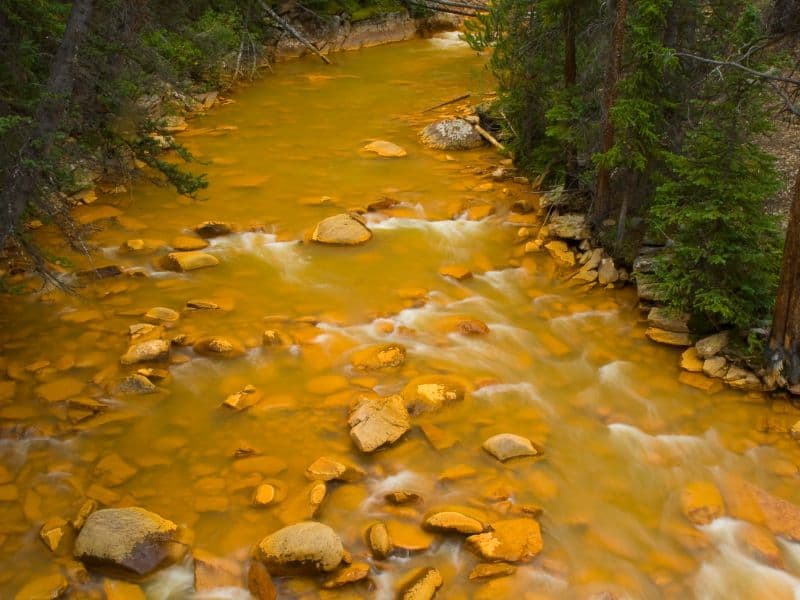
Steel production processes produce a large amount of wastewater and sludge that contain toxic pollutants. These pollutants include heavy metals, phenols, cyanides, sulfates, ammonium, and ammonia.
Improper disposal of this wastewater into water bodies leads to severe water contamination and pollution. While it’s possible to treat these industrial wastes, the process is complex and expensive due to the hazardous nature of the pollutants.
Iron ore mining is another source of water pollution that can mobilize heavy metals, which enter groundwater and rivers. These compounds drain from the mines into water bodies, harming the aquatic life and making the water unfit for consumption.
Recycling steel reduces wastewater production due to its simpler processes that don’t involve ore handling.
Additionally, it eliminates the need for extracting iron ore from the land, minimizing water pollution due to mining activities.
Finally, since recycling steel uses less energy than virgin steel production, it reduces the wastewater discharged from electricity generation plants like nuclear and thermoelectric plants. Although these discharges should be non-polluting in a chemical sense, they can raise the temperature of receiving waters, which can impact the ecosystem. This brings me nicely to my next point.
8. Thermal Pollution Reduction
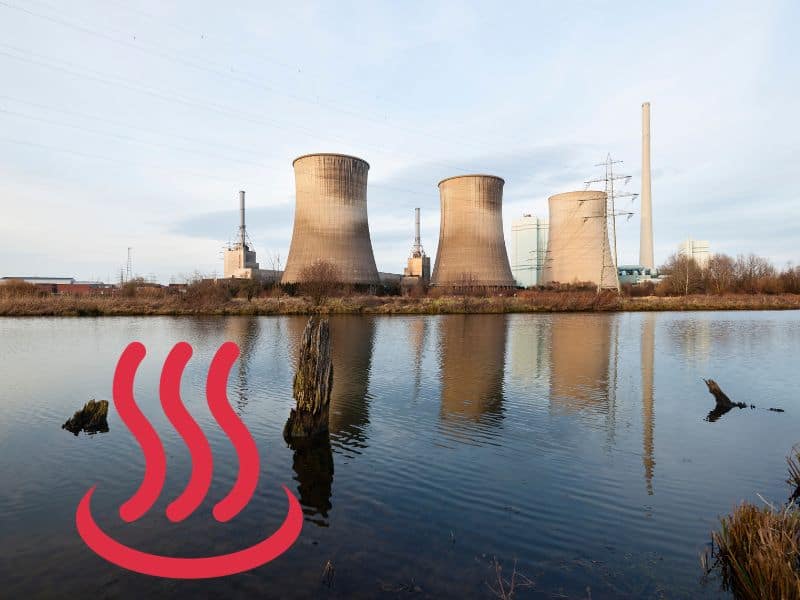
Thermal pollution refers to degrading the water quality by changing its ambient temperature.
In the case of steelmaking, thermal pollution entails releasing hot water into inland and near-shore water bodies.
The heat from this wastewater disrupts aquatic ecosystems, sometimes killing fish and other organisms.
Poorly managed steel production facilities may release waste heat from sintering, blast furnaces, and other processes into nearby water bodies.
Thermal pollution is hazardous to coldwater species like salmon, which require cool temperatures to survive.
Recycling steel is an effective alternative for combating thermal pollution.
Recycled steel is a more eco-friendly material because it releases significantly less heat into the environment than producing new steel. Therefore, it helps preserve aquatic ecosystems by preventing thermal shocks and maintaining a healthy water temperature.
Moreover, recycling steel reduces the energy demand on thermoelectric plants and other electricity sources because the process is less energy-intensive. Therefore, it contributes to reducing hot wastewater discharges from these plants.
9. It Prevents Environmental Degradation

Open-pit mining is a destructive activity that degrades the environment in the following ways:
- Habitat disruption: Clearing vegetation disrupts natural habitats, causing wildlife displacement and loss of biodiversity.
- Large open pits: The large pits created by mining activities are hard to reclaim. Thus, they pose a danger to wildlife and humans and leave a scar on the landscape.
- Surface and groundwater contamination: Tailings contain harmful chemicals that leach into groundwater and surface water, making it unfit for wildlife and humans.
- Groundwater depletion: Iron ore extraction through opencast mining can lower the water table, depleting groundwater resources. This can negatively affect local ecosystems and communities that depend on these water resources.
- Land subsidence: Open-pit mining involves removing large amounts of materials from the earth. Unless proper restoration is carried out, with appropriate management of these materials, the land can collapse, creating large sinkholes, landslips, and subsidence.
Recycling steel helps prevent environmental degradation due to iron ore extraction through opencast mining. Since recycling doesn’t involve mining, it eliminates deforestation and the large pits that degrade the environment.
Additionally, it prevents surface and groundwater contamination due to tailings and spoil heaps from ore processing.
Overall, recycling steel helps preserve the environment by minimizing land disturbance and degradation.
10. Prevention of Soil Erosion
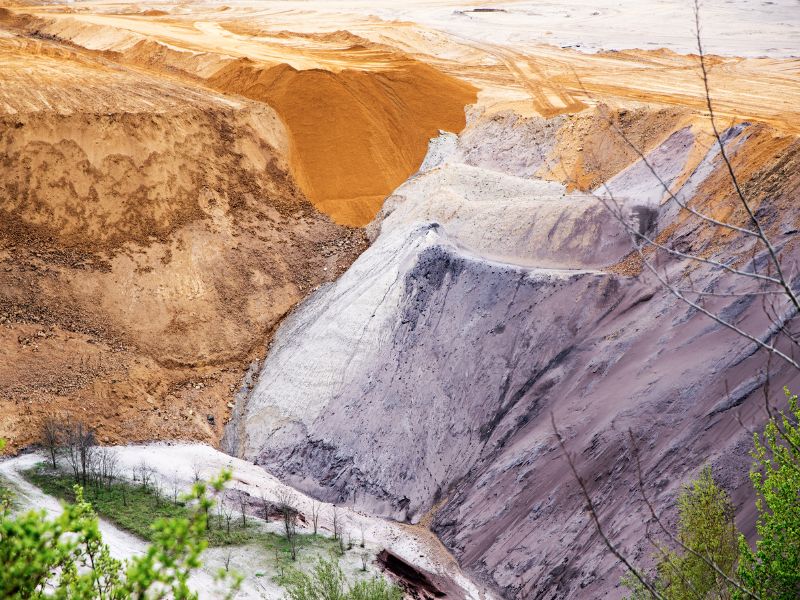
What happens when topsoil is removed and vegetation cleared? Soil erosion!
Soil erosion results from human activities such as mining. These activities strip away topsoil and damage vegetation.
Topsoil is vital in preventing soil erosion because it provides organic material and nutrients that support the plant life that holds soil particles in place.
According to Oklahoma State University, vegetation prevents soil erosion by slowing water velocity, decreasing runoff volume, and shielding the soil from flowing water.
Removing these protective layers through surface mining to extract iron ore exposes the soil to erosion. The consequences of severe soil erosion include flooding, landslides, and other natural disasters.
Recycling and reusing existing steel indirectly prevents soil erosion by eliminating the need for the surface mining of iron ore that clears vegetation and removes topsoil. Conserving soil provides further benefits in the form of carbon sequestration and maintaining soil fertility.
Final Thoughts On The Environmental Benefits of Recycled Steel
There are numerous environmental benefits of recycled steel over its virgin counterpart.
From reduced greenhouse gas emissions and natural resource conservation to energy saving and waste reduction, recycled steel is one of the unsung sustainable building materials.
It’s worth noting that steel recycling isn’t the holy grail for environmental protection. It still uses a lot of energy and releases emissions into the environment.
However, unlike manufacturing primary steel, recycling uses less energy and releases fewer pollutants, making it a better choice for sustainable construction.







